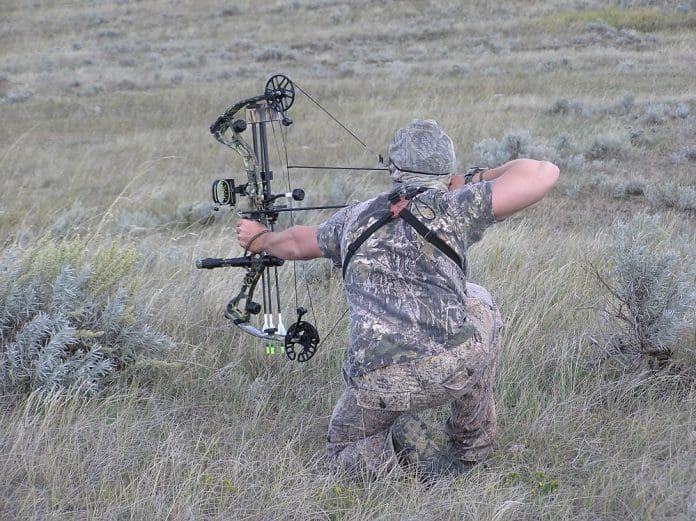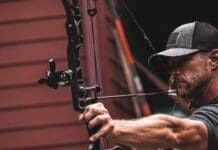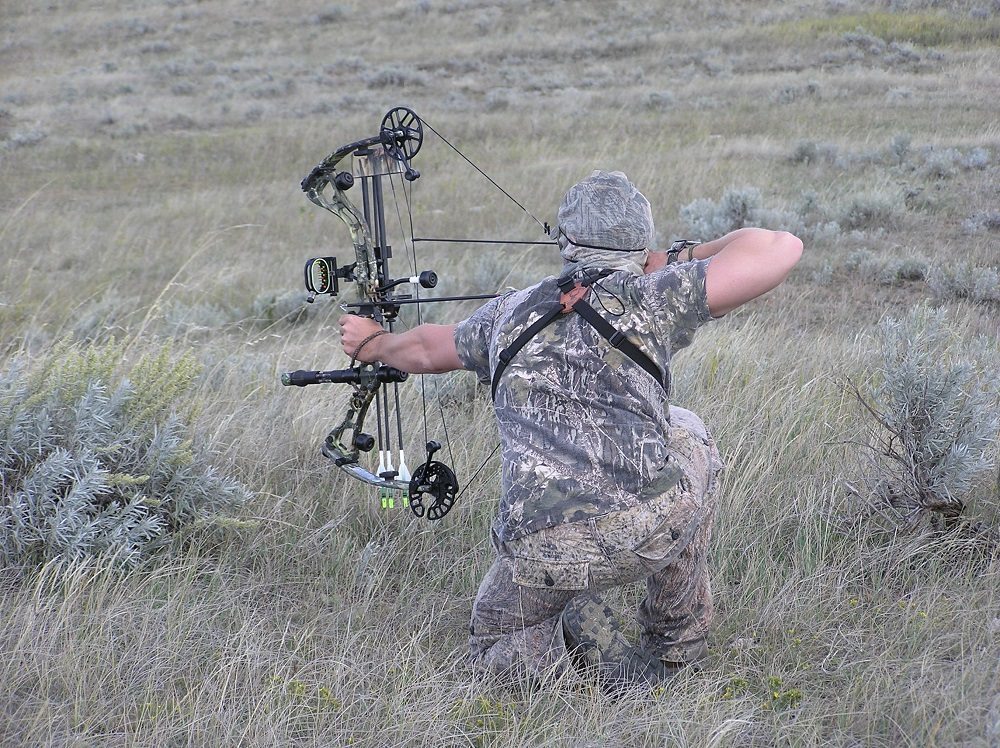
Maximum Effective Range
By Jared Bloomgren, Rokslide Staff
This can be one of those touchy subjects and often turns into one of those “I can shoot farther than you” conversations. Soon follows the arguments and embellishments. It gets even worse when you start throwing in the talk about actual animal distances, and if you’re online.
Some “Archers” even bolster facts on social media posting arrow groupings titled “My 100-yard group!” Let’s get real! That doesn’t help anybody out but their own egos. I even know of one guy who shot all his arrows in a target from a couple yards away and posted pictures about his “80-yard group.” Too bad (or not) that the arrow angle gave his lie away!
We as archers always need to remember the difference between targets and animals. So you can make a shot on a 3D target at long distances and put your arrows into the kill zone at that bad-ass 3D course set up on your local ski area. Does that mean you should take that shot on a live animal? Highly unlikely! There is one downfall to having shooting events like this: it makes many feel that they can ethically shoot at animals at unrealistic distances.
I even heard a couple guys at one shoot talking after making a shot at a moose target 113 yards away.
“Heck I can shoot at anything farther now that I can make that shot?”
Uh…No you can’t! Some don’t get it…But let’s talk facts. What is maximum effective range (M.E.R) and what can you do to improve it?
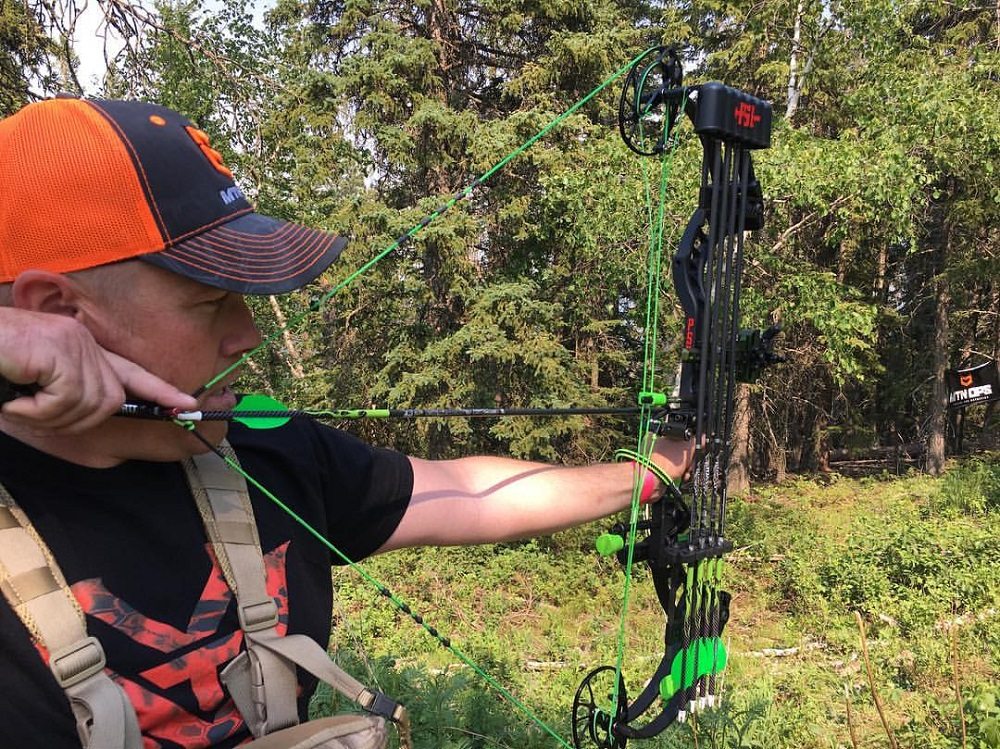
A slight downhill shot at the Total Archery Challenge at Terry Peak, SD. Third axis adjustment is needed in angled shots
I define Maximum Effective Range as a distance in which you can consistently place your arrows in the spot that you intend on any target. At a live animal this is situationally dependent on your skill, the animal’s behavior, and location as well as the environmental conditions. With a live animal there is not a set range because each situation is different, but your level of confidence needs to be there with each shot you intend to take. M.E.R. should be as close as you can get in all reality!(Photo
M.E.R with archery equipment, especially modern compound bows, gets stretched beyond what is practical due to those that think their equipment allows them to shoot farther. Regardless of the quality of equipment, we all have a M.E.R we should stick to and each individual is different. The same applies to traditional and compound archers alike. Heck even crossbow and firearms can be lumped into the concept. Each of these situations will vary on the animal’s demeanor and the constantly changing environmental conditions.
This is what it comes down to and it is as simple as this… Your M.E.R is whatever distance in which you are confidently comfortable and can consistently put your arrows in a group repeatedly. For some, this is 40 yards and for others it may be 90. Keep in mind this is not shooting at targets in hunting conditions!! M.E.R at a live animal would be MUCH less and as it takes in the animal’s behavior and weather conditions at the time of the shot. Only you can make that decision when it is GO time. Make the right one!
So what do you need to do to increase your M.E.R? It all comes down to one word: PRACTICE! (And then more practice, practice, and finally practice some more!) Try not to use an excuse that it is too hot or cold, too windy, too wet, raining, etc…you get the picture. Shooting in as many adverse weather conditions as you can will increase your shooting capability and confidence. This is one thing that makes those bad-ass 3D archery events so fun! Those like the Total Archery Challenge really test your skill. But don’t let these events make you think you are super human or your bow can shoot faster than the speed of sound! WARNING: Live animals do and will react differently!
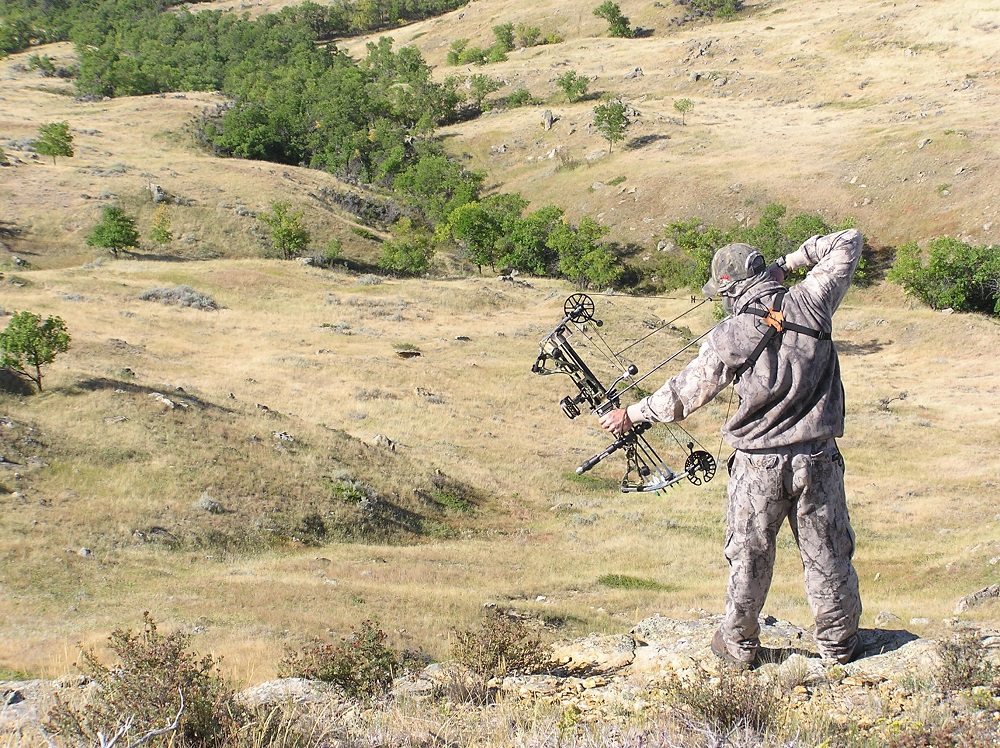
Big mule deer like to bed below ledges and cliffs requiring shots like this
When I first started shooting over 27+ years ago I began at 10 yards and over time my range increased to 20, 30, 40, 50, etc. As I became more confident in my equipment and myself, I began to stretch that distance to beyond 100 yards. This didn’t happen overnight or over a year or two. I am still brushing up on my shooting today and I feel that I can never be as good as I want or need to be! Limiting environmental factors will never let me be as good as I want to be. I use that self-realization to keep from making bad decisions when there’s an opportunity to loosen an arrow on an animal.
I like to make my practice sessions as realistic as possible. A practice that I like to do is shoot an arrow at my target and run to that target, grab my arrow and run back immediately picking up my bow and shooting another arrow. I do this to mimic the effects of being short of breath, as if I had to get into positon quick to make a shot. As I get better, I start to move the target farther away. This can also be practiced at those 3D events mentioned above.
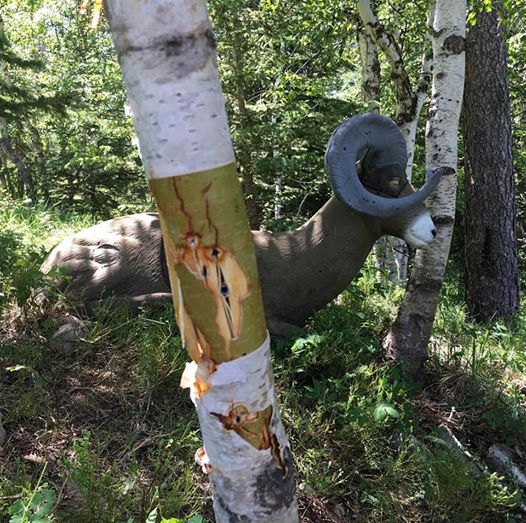
3D shoots throw in the realism of the terrain. Some weren’t so lucky on this shot at a bedded bighorn at 50 yards
Another key factor is having good form when you are shooting. Having good form makes longer shots possible and longer shooting will actually improve your form. Why? Because a minor flaw in form at 30 yards may mean a two-inch change in point of impact perhaps. A minor flaw in form at 100 yards may mean a foot or more! Longer shots force you to improve and keep your form consistent.
Shooting from various positions is also important. Standing (even and uneven ground), sitting in various positions, with various types of clothing, different angles, etc. Mimic as many various shooting positions and situations that you can. But remember, because you take longer than average shots at a target doesn’t mean you should do it at a live animal! I think you are beginning to see the repetition here!
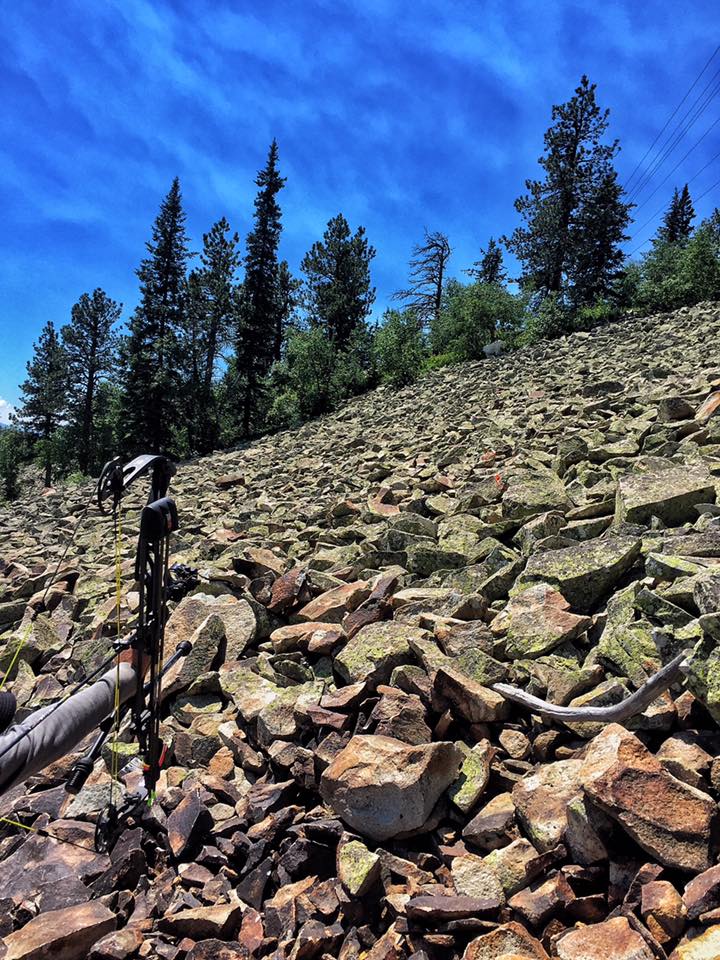
A severe angled uphill shot across rock at 60 yards. Proper axis adjustment is needed! (photo courtesy of Jake Leibke)
Now to what you might be wondering.
“You wouldn’t dare shoot at an animal at 120 yards would you?!”
NO, but I will shoot at and kill animals at longer yardages than most archers would even think about shooting. Why? Because of my practice and the confidence it’s helped develop in myself and my gear! 120 yards is not a shot I have ever done on an animal and do not plan to. I like the challenge of getting in close as I can! After all, I am an archer and not a sniper with a bow!
For target practice, a proficiency guideline that I use is this: At 30 yards, I like my groups within three inches. At 40, within four inches. At 50, within five inches, etc…So at 120 yards I want my group within 12 inches.
50 yards, three-inch group
At 70 yards, I’m happy with this four-shot group. I felt myself pull on the last shot but remained well within a seven-inch group
My average shot with my bow is around 40 yards. With that being said, the animal’s behavior, body position, and weather conditions all come into play for each shot regardless of range. An animal that has no idea I am there and is completely relaxed will allow a farther shot than an animal that is alert and nervous. Windy conditions or poor light/visibility will also shorten your shots. Keep in mind that we should never loosen an arrow on an animal unless we know it will make a good clean ethical kill shot! We should all have that same belief in our mind at all times. The greatest archer of all is the one who knows their own limitations.
Only you can decide what your M.E.R is. It will depend directly on your level of confidence and ability, which are directly related to your discipline to practice. M.E.R on a live animal in a hunting situation takes on many variables that only you can decide on. Your M.E.R will always vary depending on numerous factors that we talked about above. Conditions are never perfect to keep M.E.R a constant.
Also keep in mind that a good bow sight will have three axis adjustments. These need to be set correctly in order to help you improve your shooting capability. The 1st, 2nd, and 3rd axis adjustments are very important and not all sights have these adjustments. If you are shooting steep angled shots, (likely in the West) these adjustments come into play even more. Invest in a good sight that offers all these axis adjustments like the CBE or Spot Hogg or Black Gold. You’ll be glad you did especially when you need to make that shot count!
So what are you waiting for?! Get out there and practice and brush up on your skills! I challenge you to start practicing at longer distances and I’d bet come fall, you’ll be happy that you did. It will increase your M.E.R. guaranteed. Just don’t let it go to your head!
Sidebar: Real-World Examples
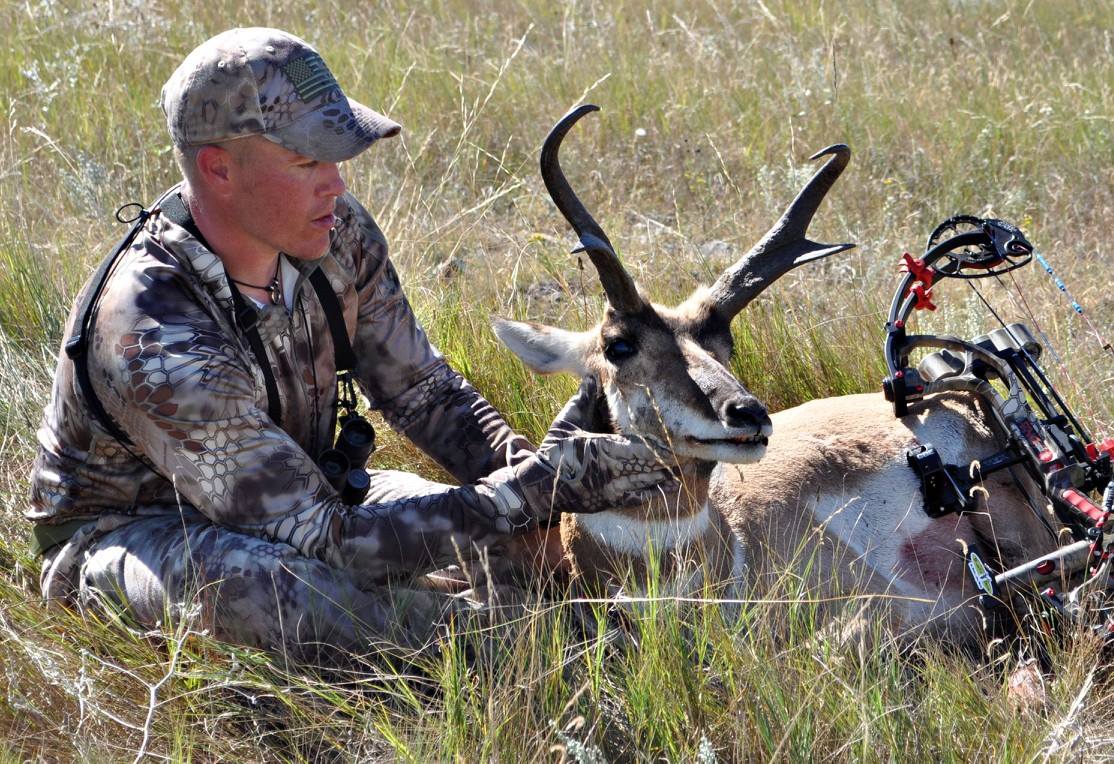
I spent nearly four hours in 90-degree heat stalking this buck on the South Dakota prarie. I ran out of cover and the buck began to feed away. With his head down and completely relaxed, I knew I could make the 62-yard shot. I would have never taken the shot if he was alert and knew I was there. With the blazing sun, I was sure happy to end that stalk!
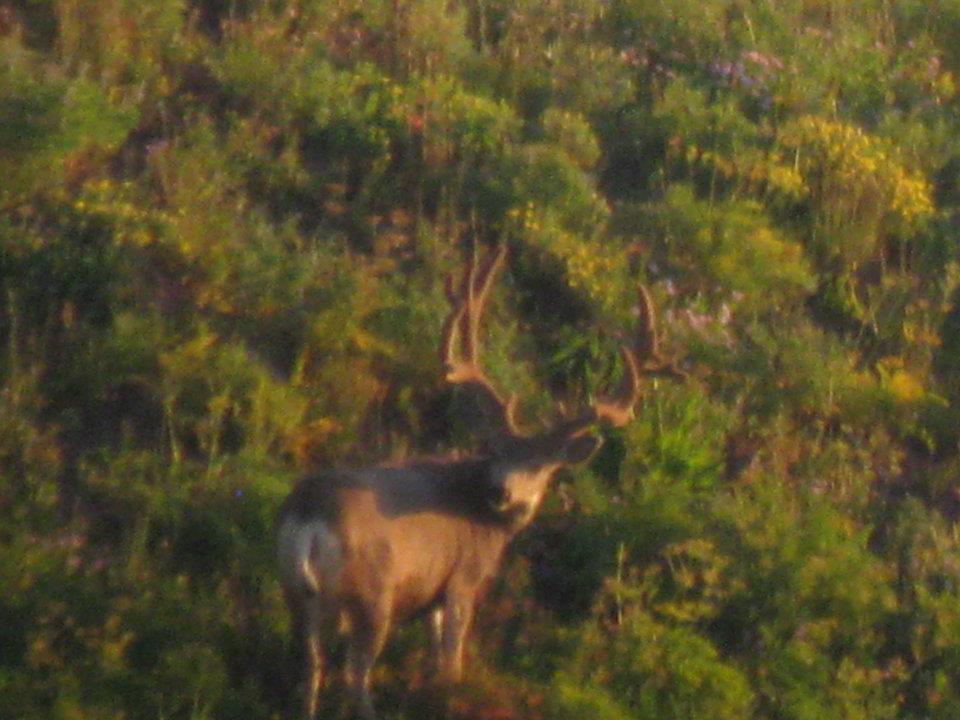
Although still hard to swallow, I had this buck at 70 yards in the high country of Wyoming but opted to not take the shot. As I waited for him to stand from his bed, my foot slipped on a rock. The slight noise made the buck nervous. I decided not to chance wounding him. He would have surely exploded out of his bed before my arrow would have reached him. If he wouldn’t have heard me and remained relaxed, he would likely have been on my wall! I still don’t regret passing that shot.
You can ask Jared questions or discuss this article here














